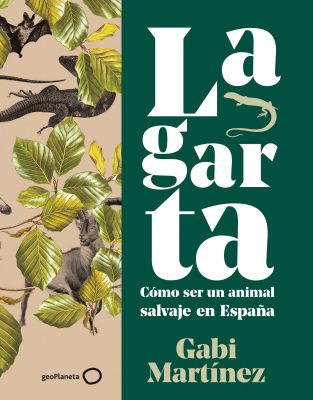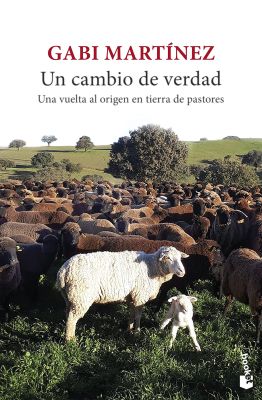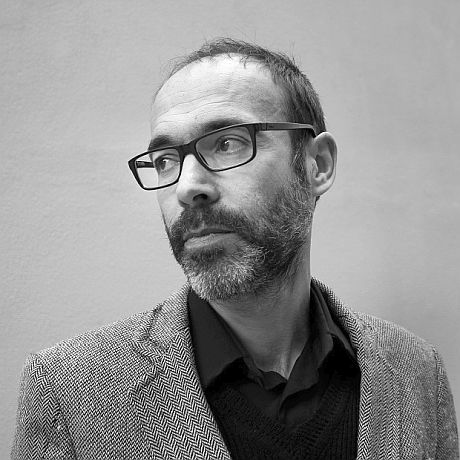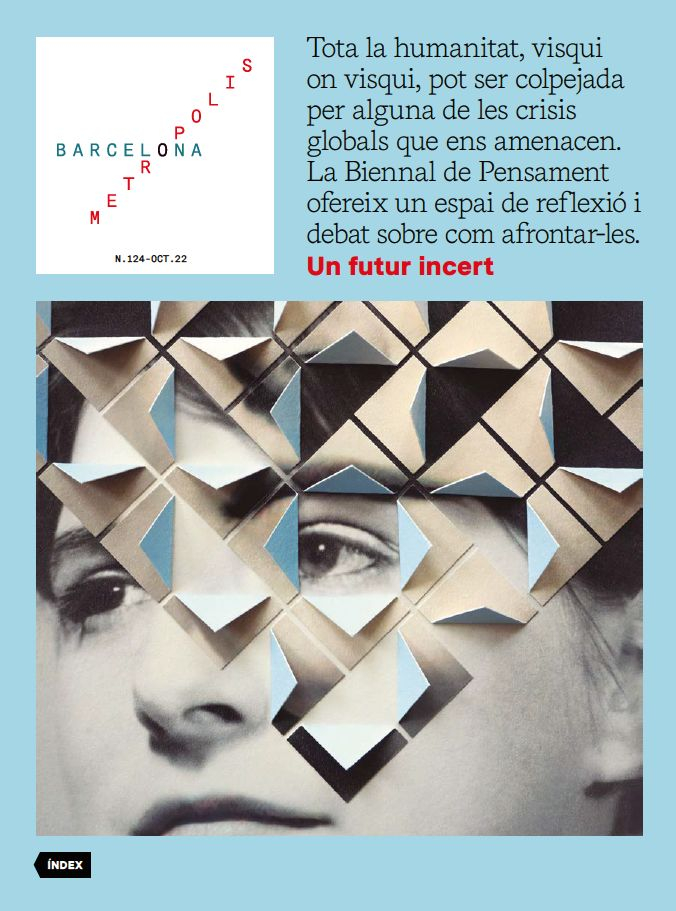Animals in the city, do I want them there?
- Dossier
- Oct 22
- 8 mins
Cities cannot just belong to “us”. We need animals. Their presence forces us to sharpen our senses other than hearing and sight, which are so urban, and stimulates the eighth intelligence: naturalist intelligence. What’s more, neighbourhoods with more pets have lower crime rates, and being surrounded by animals and plants has been shown to reduce attention deficit hyperactivity disorder in children.
Imagine that, while walking through your neighbourhood park or waiting at a traffic light, a wild boar appears. Beyond the abstract concepts of climate change, concepts such as veganism, melting ice, biophilia... there in front of you is a large mammal with sharp tusks and breathing fast because of the fear you instil in it. In the city, what do you feel, how will you act? The reaction could explain more about your true place in the world than a hundred thousand hours of ruminating and reading. When the animal has left – because, if you haven’t done anything strange, it will leave – you might ask yourself: would I like to see it again?
Coming face to face with wild boars is already a common occurrence in Barcelona, although if you lived in Chicago you might have come across a coyote; a macaque in Jaipur; a fox in Canada; or a puma in California. Not to mention marsupials in Brisbane; camels in Khartoum; elephants, cows and all kinds of monkeys in African and Asian cities; or the gamut of macro rodents, along with countless birds, in Latin American capitals. Do I want them to be there? We stake our future on the answer.
Now that more than half of the world’s population lives in cities while the need to change the relationship between humans and ecosystems to improve the planet’s health is being emphasised as a matter of urgency, it makes sense to focus much of our efforts on transforming big cities, making them hospitable for non-human beings. Needless to say, this will call for a major intervention, because thus far they have been built for the exclusive use of one species. A few decades ago, the naturalist thinker Thomas Berry encouraged The Great Conversation between humanity and the rest of nature. Berry knew that the bacteria and intelligence of other living things – from lizards to frogs, from cacti to bees – teach, nurture and immunise us; hence he advocated inter-species dialogue. And a fundamental place for this exchange would be the city.
Let’s look at the number of non-human living creatures that inhabit cities. Overall, there are usually fewer than we would like, but more than imagined, and the city is full of wild creatures who have adapted their habits to our presence, despite the obstacles we put in their way. Accepting seagulls, mice, parrots, cats or even stray dogs does not seem so hard, although the challenge lies in creating the physical and moral conditions to share large spaces with less familiar and intimidating animals such as badgers, foxes or wild boars.
By trying to cut ourselves off from animals, we have stopped understanding them and have become out of sync with them.
The paradigm shift involves understanding that the presence of animals does not imply a lack of hygiene or danger, as well as appreciating the value of microbes accumulated on fur, scales or wings, the venom of a sting, the saliva of other tongues. It is said that our ancestors knew how to listen to plants, until monoculture, monotheism and monogamy broke down communication and weakened this ability. The same has happened with animals: By trying to cut ourselves off from animals, we have stopped understanding them and have become out of sync with them. When you only relate to one, when you only cultivate one idea, one love, one species, you sever network connections, lower your defences and flirt with extinction. Cities cannot just belong to “us”. They cannot be made up only of humans with mobile phones and wires. Communication is something else. We desperately need the (regular) company of different creatures, which is why a study by the Barcelona Institute for Global Health[1] points out that living within three hundred metres of a park reduces the risk of breast cancer by 35%. Within 100 metres, the risk drops to 44%. Living within 500 metres of a green space reduces the number of premature deaths. Being surrounded by animals and plants has shown to reduce ADHD (attention deficit hyperactivity disorder) in children, who have recreational spaces away from screens, and they gain access to the mystery and physical adventure that any child craves at their age.
But these findings are recent. The transformation is at an early stage. Until recently, Barcelona’s Parks and Gardens commissioned the choice of its plants and trees to managers who followed aesthetic criteria. The hiring of biologists has allowed autochthonous species to be recovered, which last longer and consume less water, and so-called “weeds”, which stimulate pollination and spread life to unexpected spots, are already being encouraged. Work is also being done on green corridors that will allow the transit, for example, of a squirrel from the Ciutadella park, very close to the sea, to the Collserola natural park; feeders are being installed in strategic places; architects are designing buildings and structures with holes where thousands of birds can nest; and signage is being created to prevent birds from flying into glass. Another intention is to recover species that have vanished and attract new ones. The co-occurrence of so much wildlife should help balance an ecosystem that for decades was chillingly monothematic until Barcelona introduced American falcons in 1999 after the species went extinct in the late 1970s.
There are now more than eighty species of birds in the city: herons, Audouin’s gulls that have settled in the port, orioles, redstarts and a growing number of parrots. The new Plaça de les Glòries emerges as an unexpected ornithological meeting point. Warblers proliferate in vegetable gardens, which pass the baton to bats when the sun goes down, and in spring swifts can be heard. It has been estimated that there are 367 colonies of this screeching bird and 280 swallow colonies. The metro tunnels are said to be home to blackbirds, turtle doves and wagtails. An exemplary collaborator is the bat, which, apart from mosquitoes, devours dozens of pine processionary moths, sparing us from undue itching and fumigation.
Neighbourhoods with higher pet density have lower crime rates.
Collserola is home to a number of fierce animals, but they don’t usually cause any problems when they come to the city. They pursue their target, which is invariably discarded food, or to satisfy some curiosity, and try to stay hidden so that no one bothers them and so as not to hinder our movements. It is the same respect that people develop when they live surrounded by wild animals, and they are mindful of it. As for domesticated animals, they are the focal point of another interesting fact: neighbourhoods with a higher pet density have lower crime rates.
On the other hand, the presence of animals brings about new thinking because their intriguing nature forces us to sharpen our senses other than hearing and sight, which are so urban, and stimulates the eighth intelligence: naturalist intelligence. For children to develop this intelligence, it is a good idea to have animals nearby. Animals in proximity to us that help to enlighten us during a walk, providing a wildly sensual language connected to the elements, promoting ecological literacy. The director of the Sustainable Cities project, Jennifer Wolch, states that “we need to re-enchant the city by bringing animals back in”, citing, if need be, selfish reasons, such as the fact that having them nearby will make us stronger and healthier.
Convincing the population of these benefits also involves dusting off our history books and, for instance, pointing out the animal on the coat of arms. Who knows why there is a bat on Valencia’s coat of arms? At least, hundreds of bats can be found roaming around the capital of the Turia, but in Madrid, where’s the bear? And the strawberry tree? Where are the whales of Hondarribia or Getaria?
Nurturing an urban imaginary that forges closer ties with other species will increase the number of animals and plants around us, and boost our viral and cognitive defences. To this end, the role of storytellers and intellectuals will be decisive, although they will have to spend time in green spaces to hone their senses and broaden their vocabulary. To tell the story, they will have to believe that change is possible... by living it. Right now, words are lacking because real experience is lacking.
Articulating a plausible “great conversation” involves projects such as superblocks, which can rapidly, efficiently and inexpensively bring about a collective plunge into a new green city where people of all kinds have convenient spaces where they can mix and mingle at ease. If cities become forums for interspecies dialogue, millions of individuals will better understand the need to preserve wild spaces beyond urban centres. And if one day they come across a wild boar at a pedestrian crossing, they will not only know how to act, they will not even have to ask themselves if they want the animal to be there.
[1] O’Callaghan-Gordo, C. et al. Residential proximity to green spaces and breast cancer risk: The multicase-control study in Spain (MCC-Spain). International Journal of Hygiene and Environmental Health, 2018.
Recommended publications
 Lagarta. Cómo ser un animal salvaje en España GeoPlaneta, 2022
Lagarta. Cómo ser un animal salvaje en España GeoPlaneta, 2022 Un cambio de verdad Seix Barral, 2022
Un cambio de verdad Seix Barral, 2022
The newsletter
Subscribe to our newsletter to keep up to date with Barcelona Metròpolis' new developments




